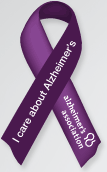One of the questions I am frequently asked by families and staff caring for people with Alzheimer’s disease is how to better understand the patterns of progression during the slow deterioration of the brain. This blog entry is a continuation of excerpts from my book, Alzheimer’s Basic Caregiving – an ABC Guide, as guidance on that topic. To order the book, click here.
Late stage patterns
In the late stage of Alzheimer’s disease – Reisberg’s Stage 7 – people eventually become totally dependent. They need assistance with all their ADLs (activities of daily living such as dressing, bathing, grooming), become incontinent of both bladder and bowel, and often need assistance with eating (although many can manage finger foods for quite a long while). They often speak only a few coherent words and sometimes none at all, although they still tend to understand much more than they can express, and occasionally pop out with a whole sentence that surprises everyone.
Their bodies look abnormal. Their tendency to list to one side and to lose their balance (which usually begins in Stage 6) becomes more exaggerated. Their faces often look blank and they may seem to be lost in thought. It becomes more difficult to gain and hold their attention. Both their increasing vision problems and their loss of proprioception (knowing where their body is in space) tend to make them unsure of their footing so that they go about with a downward gaze, giving them a bellybutton view of the world. They lose the ability to stay balanced while standing still, and it becomes increasingly difficult for them to step sideways or back up. Once they have attained forward motion, they may be able to keep going for awhile, but keeping them from falling and bumping into things is a major problem. They may walk into a corner and not know how to turn around. Because their stamina decreases, they need way stations – benches or other resting places – but these can also become obstacles in their paths. They may hang onto tables or push a chair along for balance, and then bruise themselves on that same aid. People in this stage look to their environment for cues, but principally they look at floors. Because they lose their 3-D vision, they see darkness as depth and a dark carpet or checkerboard tile floor as holes, making walking even trickier. Sunlight streaming into a room may create confusing patterns on a carpet; sunlight through blinds may create step-like shadows. At the same time, stairs without color contrasting strips on the edges blend together as a single surface. All of this, of course, can lead easily to falls and bruises and broken bones.
My beloved colleague Roseann Kasayka, Ph.D., who died two years ago, noted that scans which show brain wave activity in meditating monks and people in late stage Alzheimer’s disease are remarkably similar, so that it may be possible that people with late stage AD are actually in a peaceful meditative state. It’s an intriguing thought worth further pursuit.
On the other hand, it’s still possible to engage a person who is in Stage 7. Their eyes tend to be drawn to things that move or sparkle or light up and to strong contrasts like bulls’ eyes. They still react to sounds of nature and music and to touch – a gentle hand massage or the feel of satin, fur or flannel, for example. They may still enjoy fiddle objects, repetitive motion tasks and walking hand in hand or even waltzing down the hallway. (People unsteady on their feet can often do better moving to the rhythm of a slow dance.) Most will enjoy laughing and smiling nearly until their dying day.
Stage 7 is the last phase of Alzheimer’s disease. Eventually most people become bed-ridden as they lose the ability to walk; they need to be fed by hand until swallowing problems signal that the body is shutting down. Many will acquire pneumonia from aspirating food, but most can be helped to a peaceful death if they are surrounded by a caring community. In my experience, various hospice organizations are superb in making sure this happens. Others have developed Alzheimer’s-specific palliative care programs.
Next up: Communication challenges in late stage AD
Subscribe to:
Post Comments (Atom)








No comments:
Post a Comment